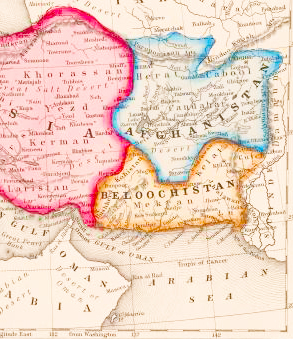Base Building in Afghanistan?
Too bad President Obama won't address America's expanding permanent presence in the cockpit of Asia during his State of the Union.
When President Barack Obama addresses the nation tonight, the expansion of America’s Afghan military bases will be notably absent from his remarks. Given the administration’s commitment to job creation and economic recovery, it may want to disclose that much of those activities over the next several years will be taking place in Central Asia, rather than America.
Nick Turse, associate editor of TomDispatch.com and author of the The Case for Withdrawal from Afghanistan, has done a fantastic job collating which of America’s forward operating bases (FOBs) are being expanded, improved, and hardened:
- FOB Shindand in western Afghanistan will receive “new security fencing, new guard towers, and new underground electrical lines.”
- FOB Salerno near the city of Khost will be undergoing expansion of its fuel facilities. “Estimated to cost $10 million to $25 million, these upgrades will increase fuel storage capacity to one million gallons to enhance land and air operations, and may not be completed for a year and a half; that is, until well into 2012.”
- FOB Shank in Logar Province has a new $12 million, 1.4-mile-long airstrip that can accommodate Lockheed C-130 Hercules and Boeing C-17 Globemaster transport aircraft. According to Turse, government documents released in August show that in addition, FOB Shank “will be adding a new two-story barracks, constructed of containerized housing units known as ‘relocatable buildings’ or RLBs, to accommodate 1,100 more troops. Support facilities, access roads, parking areas, new utilities, and other infrastructure required to sustain the housing complex will also be installed for an estimated $5 million to $10 million….New aircraft maintenance facilities and 80,000 square feet more of taxiways will also be built at the cost of another $10 million to $25 million.”
- FOBs Tarin Kowt in Uruzgan Province, Dwyer in Helmand Province, and Sharana in Paktika Province will undergo “major expansions of infrastructure to support helicopter operations, including increased apron space, taxiways, and tarmac for parking, servicing, loading, and unloading are planned for facilities.”
- The mega-base at Bagram will get a “24,000 square-foot, $10-million command-and-control facility as well as a ‘Joint Defense Operations Center’ with supporting amenities—from water storage tanks to outdoor landscaping.”
- The mega-base in Kandahar will undergo numerous upgrades, including “a $28.5 million deal for the construction of an outdoor shelter for fighter aircraft, as well as new operations and maintenance facilities and more apron space, among a host of other improvements.”
At the Special Operations headquarters in Mazar-e-Sharif, according to Noah Shachtman of Wired.com’s Danger Room, the Army’s plans to build a “communications building, Tactical Operations Center, training facility, medical aid station, Vehicle Maintenance Facility... dining facility, laundry facility, and a kennel to support working dogs” worth $30 million.
 I assume that some of these bases might in the future allow the United States to keep a watchful eye on developments in Iran and Pakistan, have transit control over air and ground space in the “cockpit” of Asia, and retain a permanent outpost in the backyard of Russia and China. But as a critic of primacy, it seems like I’m fighting a losing battle. After all, despite an increasing perception that the war is being lost—and Obama’s pledge to begin withdrawing troops in July 2011—the majority of Americans could care little about the conflict, and probably much less about the expansion, improvement, and hardening of America’s Afghanistan bases.
I assume that some of these bases might in the future allow the United States to keep a watchful eye on developments in Iran and Pakistan, have transit control over air and ground space in the “cockpit” of Asia, and retain a permanent outpost in the backyard of Russia and China. But as a critic of primacy, it seems like I’m fighting a losing battle. After all, despite an increasing perception that the war is being lost—and Obama’s pledge to begin withdrawing troops in July 2011—the majority of Americans could care little about the conflict, and probably much less about the expansion, improvement, and hardening of America’s Afghanistan bases.
